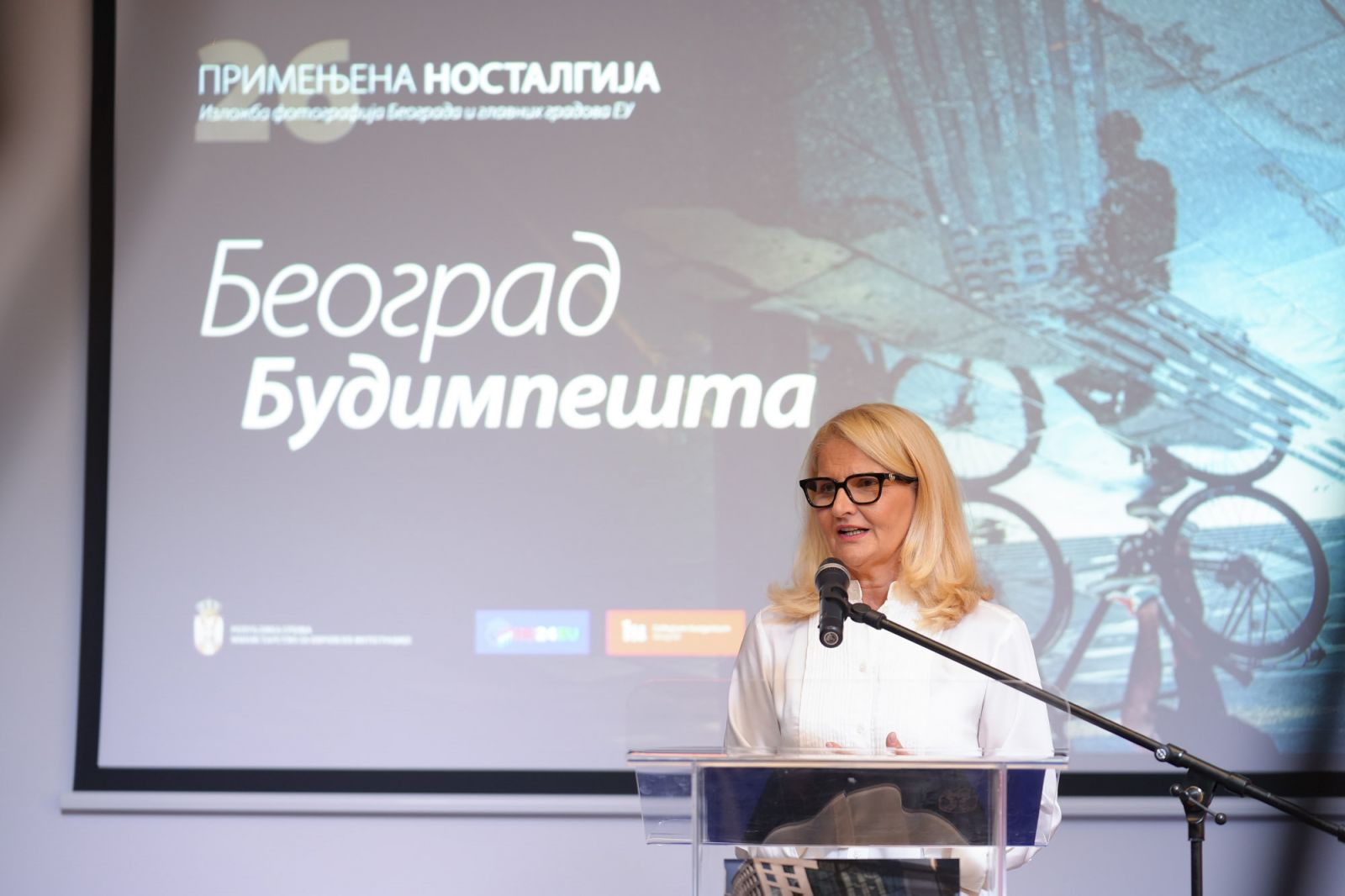
The photo exhibition “Applied Nostalgia: Belgrade–Budapest” opened this evening at the Europe House in Belgrade, featuring works by Serbian photographer Anđela Stevanović Živković and her Hungarian colleague Anna Júlia Molnár.
Živković captured photos in Budapest and Molnár in Belgrade, showcasing their personal experiences. At the opening, Serbian Minister of European Integration Tanja Miščević emphasised that the exhibition created a link between the citizens of the two capitals and their streets, highlighting the similarity of the Danube, adding that it connected both Belgrade and Budapest.
She pointed out that this exhibition differed from previous ones, which connected Belgrade with other European capitals, as it reflected Serbia’s new experience in the European integration process, which, she said, was not only far from being halted but “very much alive.”
Miščević recalled that the government adopted the accession agenda, further encouraging the important and challenging steps toward EU membership. She thanked Hungary for prioritising the Western Balkans during its EU presidency.
She also announced that Serbia’s goal was to open EU accession Cluster 3 in the coming months, as there were enough elements to do so.
Head of the EU Delegation to Belgrade Emanuele Giaufret congratulated Serbia on adopting the Reform Agenda, describing it as a crucial step in the European integration process that would drive the process forward.
“This will help move things in the right direction. Serbia and the EU share the same past, and we should share the same future,” said Giaufret.
Hungarian Ambassador to Belgrade József Magyar highlighted that the two peoples and countries had so much in common and expressed his hope that Serbia would soon become an EU member, adding that it was something Hungary was actively advocating for during its EU presidency.
“We want Serbia to progress during Hungary’s presidency, and it must not stop on this path,” he emphasised.
Magyar also noted that his country did not want to “miss out” on another three years, as negotiations between Serbia and the EU through intergovernmental commissions had been stalled during that time, and that he believed this had to change.
Co-author of the exhibition, Stevanović Živković, stated that the most challenging part of the project had been selecting the photos to showcase from over 600 taken.
“This is not just a display of cities but a journey through emotions and reflections that unite them,” she concluded.
Source: FoNet
















